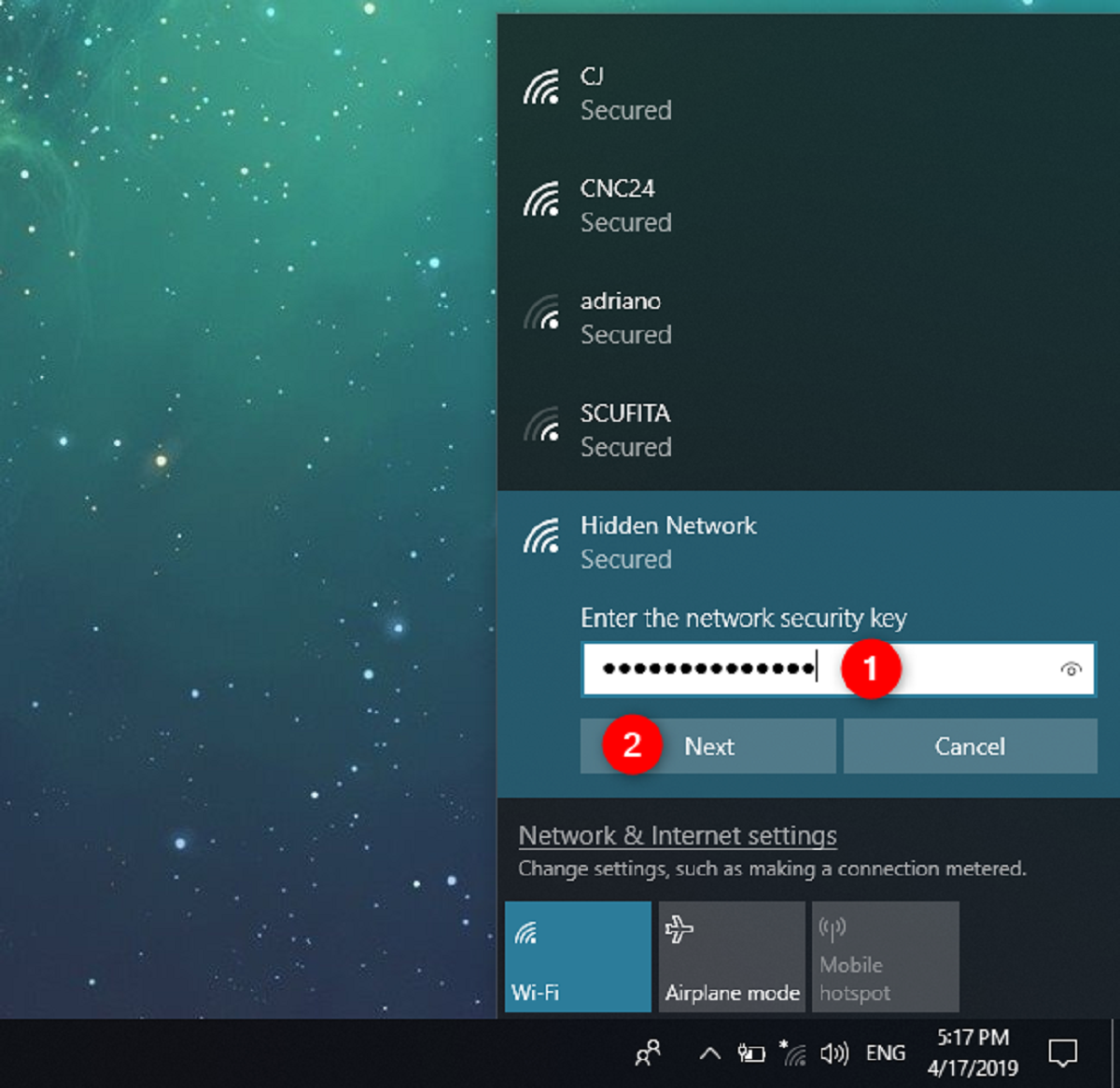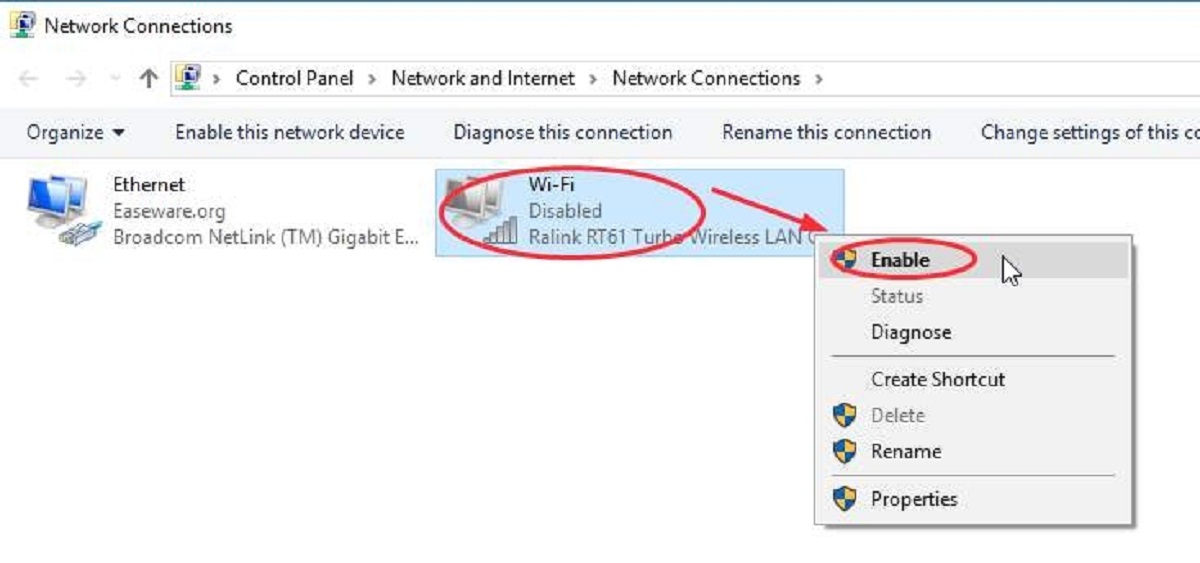Introduction
Welcome to the world of hidden network Wi-Fi! In this digital era, where Wi-Fi networks are ubiquitous, hiding your network might seem counterintuitive. After all, why would anyone want to conceal their Wi-Fi network? However, there are valid reasons why individuals and businesses choose to keep their wireless networks hidden from plain sight.
Hidden network Wi-Fi, also known as a closed network or non-broadcast network, is a wireless network that does not appear on the list of available networks when scanning for Wi-Fi access points. Unlike visible networks, which broadcast their names (Service Set Identifiers or SSIDs), hidden networks require users to manually enter the network name and password to connect.
While hidden network Wi-Fi may not be suitable for every situation, it offers a layer of privacy and security that can be beneficial in certain scenarios. In this article, we will delve into the world of hidden network Wi-Fi, exploring how it works, the benefits and drawbacks, the security risks involved, and how to connect to and disable or hide your own network.
Whether you are an individual looking to protect your home network or a business aiming to safeguard confidential information, understanding hidden network Wi-Fi is essential. Join us as we explore the intricacies of this hidden world and uncover the secrets behind hidden network Wi-Fi.
Understanding Hidden Network Wi-Fi
To truly grasp the concept of hidden network Wi-Fi, it’s important to understand how wireless networks operate. Typically, when you turn on your device’s Wi-Fi, it scans the surrounding area for available networks. These networks are identified by their Service Set Identifiers (SSIDs), which are essentially their names.
Hidden network Wi-Fi works differently. Instead of broadcasting its SSID, a hidden network keeps its name hidden from the list of available networks. This means that you need to manually enter the network name and password to connect to it.
Why would someone choose to hide their Wi-Fi network? Well, there are a few reasons. First, it adds an extra layer of security. Think of it as hiding a treasure – if people don’t know it exists, they won’t be tempted to try accessing it. By keeping your Wi-Fi network hidden, you reduce the chances of unauthorized users attempting to connect to your network.
Second, hiding the network can deter casual users from trying to connect. It’s like having an unlisted phone number – only those who have been given the specific details can access it. This can be particularly useful in densely populated areas, such as apartment buildings, where multiple networks may be competing for bandwidth.
Lastly, hiding your Wi-Fi network can prevent it from being a target for potential hackers. By not broadcasting your network’s name, you make it harder for malicious individuals to identify your network as a potential target. This can provide an extra layer of protection against various types of Wi-Fi attacks.
However, it’s important to note that hiding your network does not provide foolproof security. Savvy hackers can still discover hidden networks using specialized tools. Therefore, it’s essential to implement additional security measures, such as strong passwords and encryption, to safeguard your network from potential threats.
Now that we have a better understanding of hidden network Wi-Fi, let’s explore how this type of network works in more detail and the benefits it can offer.
How Hidden Network Wi-Fi Works
Hidden network Wi-Fi operates by suppressing the broadcasting of the network name (SSID) that would normally be visible to devices scanning for available networks. Instead of broadcasting the SSID, the network remains hidden from view, making it harder for unauthorized users to discover and attempt to connect to the network.
When a device attempts to connect to a hidden network, it needs to manually enter the network name and password. This manual configuration adds an extra layer of security as it requires users to have specific knowledge of the network details.
Hidden network Wi-Fi works by utilizing a wireless access point (WAP) or router that supports the hidden network feature. Within the router settings, an option is available to disable SSID broadcasting. By enabling this option, the network name is not automatically included in the list of available networks during Wi-Fi scans.
When a device wants to connect to a hidden network, the user must manually enter the network name (SSID) and password in the Wi-Fi settings. The device then sends a network probe request to the access point, requesting connection to the hidden network. If the entered network details match those of the hidden network, the access point grants access to the device.
From the user’s perspective, connecting to a hidden network is a straightforward process. However, it does require some additional steps compared to connecting to a visible network. This added complexity can deter casual users from attempting to connect to the network, further enhancing its security.
It’s worth noting that while hidden network Wi-Fi may provide an extra layer of security and privacy, it can also present some challenges. For instance, connecting new devices to the network becomes more cumbersome as they can’t automatically detect and connect to the hidden network. Each new device must be manually configured with the network details.
In the next sections, we will explore the benefits and drawbacks of hidden network Wi-Fi to help you determine if it’s the right option for your specific needs.
Benefits of Hidden Network Wi-Fi
Hidden network Wi-Fi offers several advantages that make it an appealing option for individuals and businesses concerned about the security and privacy of their wireless networks. Let’s explore some of the key benefits:
- Enhanced Security: One of the primary benefits of a hidden network is the added security it provides. By keeping the network name hidden, you reduce the chances of unauthorized users attempting to connect to your network. It acts as a deterrent, as potential intruders are less likely to target networks they cannot easily discover.
- Privacy Protection: Hidden network Wi-Fi can offer an elevated level of privacy. With the network name not being broadcasted, it becomes less visible to nearby devices. This can be especially beneficial in densely populated areas or public spaces where multiple networks may compete for bandwidth. It ensures that only those who have been provided with the specific network details can access it.
- Reduced Network Clutter: In crowded Wi-Fi environments, such as apartment complexes or office buildings, having a hidden network can help reduce network clutter. With fewer visible networks competing for attention, it can improve the overall performance and reliability of your network.
- Protection Against Casual Users: Hiding your Wi-Fi network can deter casual users from attempting to connect. This is particularly useful if you want to control who has access to your network. Only those who have been given the explicit network name and password can connect, reducing the risk of unauthorized usage.
- Minimized Potential for Attacks: By not broadcasting your network name, hidden network Wi-Fi makes it harder for malicious individuals to identify your network as a potential target. While it doesn’t provide foolproof security, it can add an extra layer of protection against various types of Wi-Fi attacks.
It’s important to note that while hidden network Wi-Fi offers these benefits, it may not be suitable for every situation. The decision to hide a network should be based on your specific needs, the level of security required, and the usability trade-offs involved.
Now that we’ve explored the benefits, let’s also consider the potential drawbacks of hidden network Wi-Fi to gain a holistic understanding of this approach.
Drawbacks of Hidden Network Wi-Fi
While hidden network Wi-Fi offers several benefits, it also comes with a few drawbacks that may impact its usability and effectiveness. Let’s take a closer look at some of the common drawbacks:
- Complex Configuration: Connecting new devices to a hidden network can be more cumbersome compared to visible networks. As the network name is not broadcasted, each new device needs to be manually configured with the network details. This can be time-consuming, especially in scenarios where multiple devices need to be connected regularly.
- Incompatibility with Some Devices: Some older or less common devices may not be compatible with hidden network Wi-Fi. They may rely on the visibility of network names to connect automatically and could face difficulty connecting to a hidden network. It’s important to consider device compatibility when opting for a hidden network.
- Inconvenience for Guests: If you frequently have guests or visitors who need to connect to your Wi-Fi, a hidden network can become inconvenient. They won’t be able to see the network listed when scanning for available networks and will need to manually enter the network details each time they want to connect.
- Increased Support Complexity: Troubleshooting network issues can be more complicated with a hidden network. When providing support to others or seeking help, you may need to guide them through the process of manually entering the network details, which can be challenging for non-technical users.
- Not Foolproof Security: While hiding your network can provide an additional layer of security, it should not be relied upon as the sole method of protection. Savvy hackers can still discover hidden networks using specialized tools. Implementing additional security measures, such as robust passwords, encryption, and regular firmware updates, is essential to further safeguard your network.
Before deciding to hide your Wi-Fi network, it’s crucial to consider these drawbacks and evaluate whether they outweigh the benefits for your specific situation. Assessing the level of security required, the number of devices connected to the network, and the potential inconvenience to guests will help you make an informed decision.
Now that we’ve examined the drawbacks, let’s delve into the security risks associated with hidden network Wi-Fi.
Security Risks of Hidden Network Wi-Fi
While hidden network Wi-Fi provides an additional layer of privacy and security, it is important to understand and address the potential security risks associated with this approach. Let’s explore some of the key security considerations:
- Easier to Target: While hiding your network name can deter opportunistic attackers, determined hackers can still identify hidden networks using specialized tools. It is essential to recognize that hidden network Wi-Fi should not be solely relied upon as the sole method of protection. Implementing strong passwords and encryption protocols, as well as keeping firmware and software up to date, is crucial to prevent unauthorized access to your network.
- Man-in-the-Middle Attacks: Hidden network Wi-Fi can be vulnerable to man-in-the-middle (MitM) attacks. In this type of attack, an attacker intercepts communication between devices and the access point, potentially compromising the exchanged data. MitM attacks can be mitigated by using robust encryption protocols, such as WPA2-Enterprise, and regularly monitoring network traffic for suspicious activity.
- Difficult Detection of Unauthorized Access: With a hidden network, it can be challenging to detect if someone unauthorized has gained access to the network. Unlike visible networks where you can easily spot unfamiliar devices connected to your network, hidden networks rely on manually entering network details, making it harder to identify potential intruders. Regularly monitoring and reviewing connected devices in your network can help identify and mitigate any unauthorized access.
- Increased User Error: As hidden networks require users to manually enter the network name and password, there is a higher risk of user error. Individuals may inadvertently connect to the wrong network or enter incorrect network details, potentially exposing their devices and data to security risks. User education and awareness on the correct network details and best practices for secure connections are essential to minimize these risks.
- Weaker Network Isolation: With a hidden network, it can be more challenging to enforce proper network isolation. If an authorized user unknowingly connects to a compromised device or an infected network, the hidden nature of the network makes it harder to detect and contain the issue. Implementing network segmentation, strong access control measures, and regularly monitoring network traffic can help mitigate the risk of compromised devices affecting the entire network.
Understanding the potential security risks associated with hidden network Wi-Fi is crucial for making informed decisions regarding network security measures. By addressing these risks through a combination of strong passwords, encryption, regular monitoring, informed user practices, and other security measures, you can enhance the overall security of your hidden network.
Now that we have explored the security risks, let’s turn our attention to the process of connecting to a hidden network Wi-Fi.
How to Connect to a Hidden Network Wi-Fi
Connecting to a hidden network Wi-Fi requires manual configuration of network settings on your device. While it may vary slightly depending on the operating system and device, the general steps are as follows:
- Open Wi-Fi Settings: Go to the Wi-Fi settings on your device. This is typically found in the device’s settings menu.
- Manually Add Network: Look for an option to add a network manually or enter the network details. This might be labeled as “Add Network” or “Join Hidden Network.”
- Enter Network Name: Enter the network name (SSID) of the hidden network. Make sure to enter it correctly to successfully connect.
- Select Security Type: Choose the appropriate security type for the hidden network. This is usually WPA2-PSK or WPA3-PSK for home networks. If you’re unsure, check the network administrator or router documentation for the correct security type.
- Enter Password: Input the network password or passphrase. Ensure that it is entered correctly, as it is case-sensitive.
- Connect to the Network: Once you have entered the correct network name and password, select the connect or join button to connect to the hidden network.
- Wait for Connection: Your device will attempt to connect to the hidden network. It may take a few moments to establish the connection. Once connected, you will see the network icon or indicator on your device.
It’s important to remember that when connecting to a hidden network, you need to ensure that you have the correct network name and password. Double-check the details to avoid any connection issues.
Additionally, some devices may have slightly different steps or options for connecting to hidden networks. If you encounter any difficulties, consult the device’s user manual or online support resources for more specific instructions.
Now that we know the process of connecting to a hidden network, let’s explore how to disable or hide your own network if needed.
Steps to Disable or Hide Your Network Wi-Fi
If you want to disable or hide your network Wi-Fi, follow these steps:
- Access Your Router Settings: Open a web browser on a device connected to your network and enter the IP address of your router in the address bar. The default IP address is often 192.168.1.1 or 192.168.0.1, but it may vary depending on the router brand and model. Check your router’s manual or manufacturer’s website for the correct IP address.
- Login to Your Router: Enter the administrator username and password to login to your router’s settings. If you haven’t changed these credentials, they are usually printed on the router or provided in the documentation.
- Navigate to Wireless Settings: Once logged in, locate the wireless settings section. This might be labeled as “Wireless,” “Wi-Fi,” or “Network Settings.”
- Disable SSID Broadcasting: In the wireless settings, look for an option to disable SSID broadcasting. This can be named differently depending on the router, but choices might include “Hide SSID,” “Disable SSID Broadcast,” or similar.
- Save the Changes: After disabling SSID broadcasting, make sure to save the changes by clicking the “Save,” “Apply,” or “OK” button in the router settings. The router will likely need to restart to implement the new settings.
- Reconnect to Your Network: Once the router has restarted, you need to manually configure your devices to connect to the hidden network. Follow the steps outlined in the previous section on how to connect to a hidden network Wi-Fi.
Keep in mind that disabling SSID broadcasting does not guarantee complete invisibility of your network. Determined individuals can still find hidden networks using specialized tools and techniques. However, it does provide an added layer of security and makes your network less visible to casual users.
If you decide to re-enable SSID broadcasting in the future, you can return to the router settings and follow similar steps, enabling the option to broadcast SSID.
Remember to take note of any customized settings or changes you make to your router settings for future reference.
Now that you know how to disable or hide your network Wi-Fi, let’s conclude our discussion.
Conclusion
Hidden network Wi-Fi offers a unique approach to securing and maintaining privacy within wireless networks. By not broadcasting the network name (SSID), it adds an extra layer of security and can deter unauthorized users from attempting to connect. However, it’s important to recognize that hidden network Wi-Fi is not foolproof and should be used in conjunction with other security measures.
Despite its benefits, there are drawbacks to consider. Connection complexities, compatibility issues, and inconveniences for guests are factors that may affect the usability of hidden networks. Additionally, while hidden networks may be harder to detect, they are not immune to attacks, and diligent network security practices remain crucial.
To connect to a hidden network, you need to manually configure your devices with the network name and password. This process differs slightly depending on the device and operating system but generally involves accessing the Wi-Fi settings and manually adding the network.
If you decide to disable or hide your own network Wi-Fi, the router settings provide options to disable SSID broadcasting. This adds an additional layer of privacy by making the network less visible to casual users, but determined individuals can still discover the hidden network through specialized tools.
Ultimately, the decision to use hidden network Wi-Fi should be based on your specific needs, considering the trade-offs between convenience, device compatibility, and network security. It’s crucial to implement strong passwords, encryption protocols, and regular monitoring to enhance network security, regardless of whether your network is hidden or visible.
By understanding the intricacies of hidden network Wi-Fi and considering its benefits, drawbacks, and related security risks, you can make informed decisions to protect your wireless network and ensure the privacy and security of your data.
Thank you for joining us on this journey through the world of hidden network Wi-Fi. Remember to stay vigilant, stay informed, and keep your network secure.

























